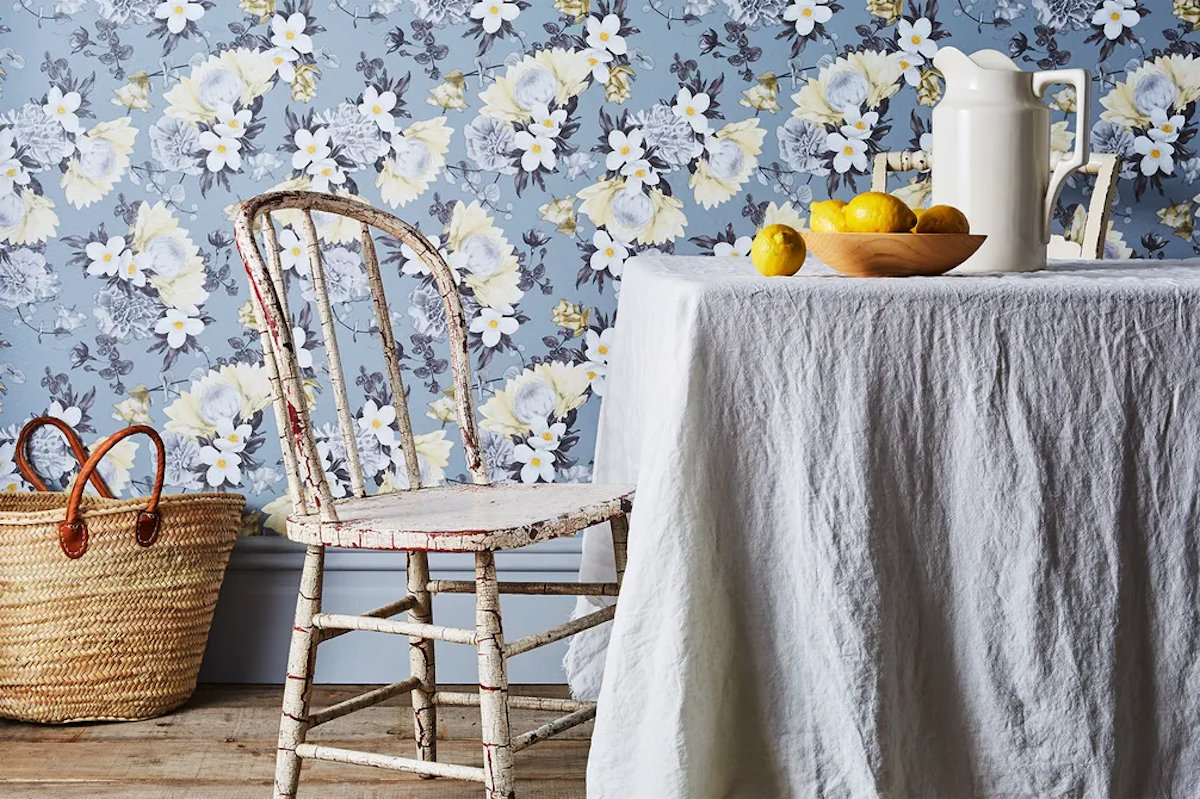6 removable wallpaper mistakes I’ll never make again

My powder room was begging for an accent wall. I spent hours looking for the perfect removable wallpaper online and landed upon a utterly charming pattern: little owls perched on branches. When the day came to hang the wallpaper, I carefully measured; lined up the patterning; and used one of those wallpaper smoothing tools to get all the bubbles out. It turned out lovely and I went to bed thinking about how beautiful the bathroom looked.
The next morning, I sleepily came downstairs to make breakfast, and realized in horror that the wallpaper had not just fallen right off, it was sticking to itself. Later that day, I managed to repeat the entire process and hung it once again, only to have it fall off hours later. I couldn’t figure out what I was doing wrong.
After some research, I realized that the fault didn’t lie with my wallpapering skills. The problem was that I had textured walls in my house, and guess what? Removable wallpaper and textured walls don’t get along.
Since then, I’ve had to ditch my dreams of wallpapered walls, since removable wallpaper pretty much never works on a sand finish. I’ve turned to paint instead, but I still daydream about pretty patterns splashed across them.
While removable wallpaper may not be in the cards for me, others shouldn’t be denied the pure joy of a palmyra leaf-covered wall. Yes, removable wallpaper does require a bit of skill — beyond knowing whether it’ll stick to a textured finish or not — but there are ways to keep frustration at bay.
If you’d like to avoid making mistakes and achieve a smooth, beautiful result with your removable wallpaper, read on for tips from a pro — Elizabeth Rees, founder of beloved wallpaper brand Chasing Paper.
What not to do:
Mistake #1: Skipping samples
If you can source samples of removable wallpaper before ordering it, do it, especially if the wallpaper is on the expensive side.
“While you may love how a pattern or color looks on a screen, it can be difficult to assess how it will look in your space and at different times of day, depending on your lighting,” Rees explains. “We recommend ordering a variety of samples, sticking them on your wall, and seeing how the light reflects and changes throughout the day before making your final order.”
Mistake #2: Trying to wallpaper textured walls
Yes, I wish I would have known this before my removable wallpaper heartbreak. Rees plainly says that textured walls don’t play well with removable wallpaper, adding, “Typically, textured walls make it difficult for peel-and-stick wallpaper to stick properly.”
Mistake #3: Wallpapering a freshly painted wall
“Paint needs time to fully cure, so make sure that your wallpaper installation timeline is at least four weeks after a wall is freshly painted,” Rees advises. “Walls should ideally be primed with a premium eggshell, satin, or semi-gloss paint. Matte finishes can be a bit trickier, as the adhesive can bond and pull off the paint.”
Mistake #4: Not ordering enough
Whether you’re ordering removable or regular wallpaper, Rees can’t emphasize enough how important it is to measure carefully.
“Measure twice, order once!” she says. “We recommend ordering 10-15% in overage. This will come in handy for tricky spots or if you choose a more complicated pattern. If you end up needing more later, the color could arrive slightly off from your original order because it’s not printed in the same batch.”
Mistake #5: Rushing installation
Repeat after me: I will not squeeze in wallpapering when I’m pressed for time. You might want to take advantage of your free hour or two during a busy weekend, but this is not the way to approach removable wallpaper.
Rees says, “The key is to go slowly. Choose one side of the room to begin, and start by peeling off the back of just the top of the panel to make it more manageable. Slowly peel more of the backing off as you go. If you peel too much off initially, the wallpaper may stick together, which can be very frustrating.”
Mistake #6: Overworking the panel
What does this mean exactly? It means that you should be delicate when installing removable wallpaper, taking care not to pull it too hard or be too aggressive with it.
“Go gently with the installation, so as to not overwork the panel. Overpulling can cause the panel to stretch or lose strength in the adhesive backing, so the seam doesn’t adhere properly,” Rees notes.
. . . and the do’s
Rees also shares her do’s when it comes to hanging removable wallpaper. Here’s what she says:
- Wipe down the walls at least a few days ahead of time to allow for the walls to be clean and dry.
- To make installation a bit easier, mark the walls lightly with a pencil at the bottom where a wallpaper panel will end, to ensure that all the panels are installed evenly. For instance, if you choose to use two-by-four-foot wallpaper panels, take a measuring tape and measure four feet down from the ceiling; mark the wall lightly. Repeat again at the eight-foot mark, and so on.
- For any tricky spots, such as light plates or angled walls, use a ruler and an X-Acto knife to cut out the holes or angles.
- To finish, smooth out the wallpaper with your hands or with a straight object like a smoothing tool or ruler. If you still have an air bubble, just prick it with a small pin to release the air.

